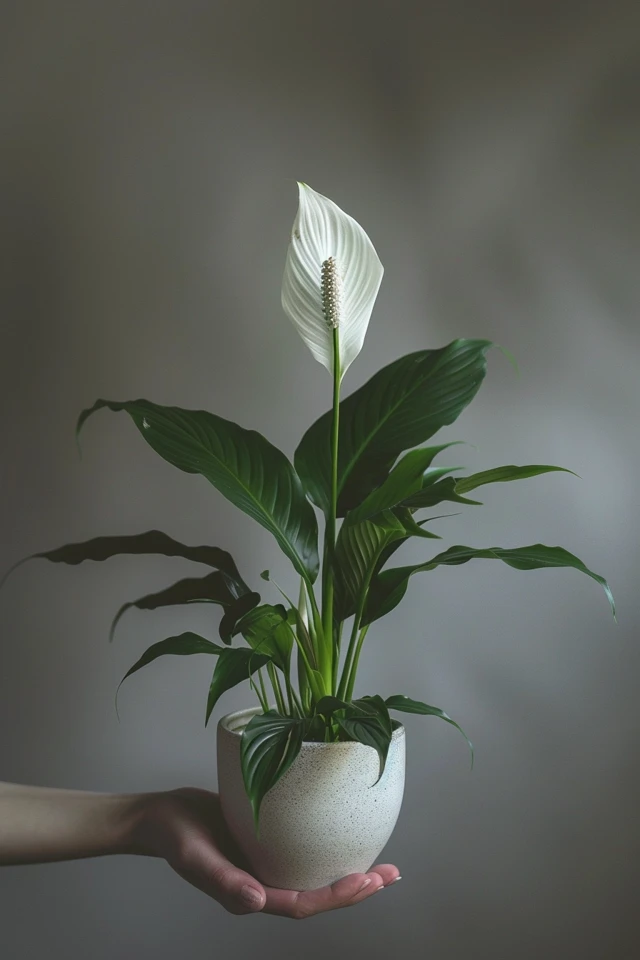Peace lilies are beautiful indoor plants that can bring a touch of serenity to any space. However, like any living organism, they can sometimes face health issues and need a little extra care. If you notice your peace lily looking droopy, with brown or yellow leaves, it may be in need of revival. In this article, I will guide you through some effective techniques to revive your dying peace lily and bring it back to its vibrant, green glory.
The most common issues that cause peace lilies to decline are overwatering, underwatering, and insufficient light. Overwatering can lead to root rot, while underwatering can cause the leaves to droop and brown. Insufficient light can also result in a lackluster appearance and yellowing leaves. By addressing these issues and implementing the following revival techniques, you can help your peace lily regain its health and vitality.
Key Takeaways:
- Reviving a dying peace lily requires patience and observation.
- Overwatering and underwatering are common causes of decline.
- To revive an overwatered peace lily, trim away rotted roots and repot in fresh soil.
- To revive an underwatered peace lily, soak the pot in water and rehydrate the soil.
- Insufficient light can cause peace lilies to lose their luster; move them to a brighter area.

How To Revive a Droopy Peace Lily: Root Health, Pruning, Nutrients, Sunlight
To revive a droopy peace lily, several important steps need to be taken to ensure its health and wellbeing. By addressing root health, pruning, providing essential nutrients, and optimizing sunlight exposure, you can help revive a wilting peace lily and restore its vitality.
Checking Root Health
The first step in reviving a droopy peace lily is to assess the root health. Gently remove the plant from its container and examine the roots. Soft and brown roots may indicate root rot, one of the common causes of a dying peace lily. To address this issue, trim off any dead or dying roots using clean and sharp scissors or pruners.
Repotting with Fresh Compost
After removing and trimming the affected roots, it’s crucial to repot the peace lily with fresh compost. Choose a well-draining soil mix and make sure not to overwater the plant to avoid root rot recurrence. Adequate drainage is essential for preventing waterlogged soil, which can harm the peace lily’s root system.
Pruning Dead or Yellowing Leaves
In addition to addressing root health, pruning is essential to reviving a droopy peace lily. Use clean and sharp scissors or pruners to remove any dead or yellowing leaves. By removing these damaged leaves, you allow the plant to redirect its energy towards new growth and overall rejuvenation.
Providing Essential Nutrients
Supplying the peace lily with the necessary nutrients is crucial in its revival process. Use an all-purpose plant food and dilutely fertilize the plant every time you water it. This ensures that the peace lily receives essential nutrients, like nitrogen, phosphorous, and potassium, for healthy growth.

Optimizing Sunlight Exposure
Placing the droopy peace lily in a spot with adequate sunlight is vital but should be done cautiously. While the plant requires sunlight for photosynthesis, direct sunlight can scorch its leaves. Find a balance by placing the peace lily in a sunny area where it receives bright, indirect light. You can also rotate the plant periodically to ensure even exposure.
Additionally, increasing humidity levels can aid in reviving a droopy peace lily. Placing the plant near a tray of pebbles filled with shallow water can create a humid microenvironment. Regular misting will also help raise humidity levels and hydrate the plant’s leaves.
By addressing root health, pruning, providing essential nutrients, and optimizing sunlight exposure, you can effectively revive a droopy peace lily and bring it back to its full vibrancy. Remember, proper indoor plant care is essential for the health and longevity of your peace lily.
Tips for Growing and Propagating Peace Lilies: Light, Temperature, Watering, Repotting, Fertilizing
When it comes to growing and propagating peace lilies, there are several key factors to consider. First and foremost, peace lilies thrive in bright indirect light. They can tolerate low light conditions, making them ideal for indoor spaces. If possible, place your peace lily near a window with morning sun or choose a northern or eastern exposure window.
Temperature is another important aspect of peace lily care. These plants prefer temperatures between 65°F and 85°F, so maintain a comfortable room temperature for optimal growth.
Proper watering is crucial for peace lily health. These plants prefer moist soil, so it’s important to keep the potting soil slightly moist. However, avoid letting it dry out completely or become waterlogged, as this can harm the plant. Regularly check the moisture level of the soil and adjust your watering routine accordingly.
As peace lilies grow quickly and develop vigorous root systems, repotting is necessary. When repotting, be mindful not to damage the roots. Choose a pot that provides enough room for growth and use well-draining soil to ensure proper moisture balance.

Fertilizing is essential for the overall health and vitality of peace lilies. Dilutely apply an all-purpose plant food containing nitrogen, phosphorous, and potassium at every watering session. This helps provide the necessary nutrients for robust growth and beautiful blooms.
To maintain the health of your peace lily, it’s important to regularly clean its leaves. Dust can collect on the leaves and hinder the plant’s ability to photosynthesize effectively. Simply wipe the leaves with a damp cloth or gently mist them to remove any accumulated dust.
If you’re interested in propagating peace lilies, you can do so by dividing the plant at the roots during repotting. This allows you to create new plants and expand your collection.
Lastly, it’s important to note that peace lilies are toxic to cats and dogs. If you have pets, take precautions to keep them away from the plant to ensure their safety.

